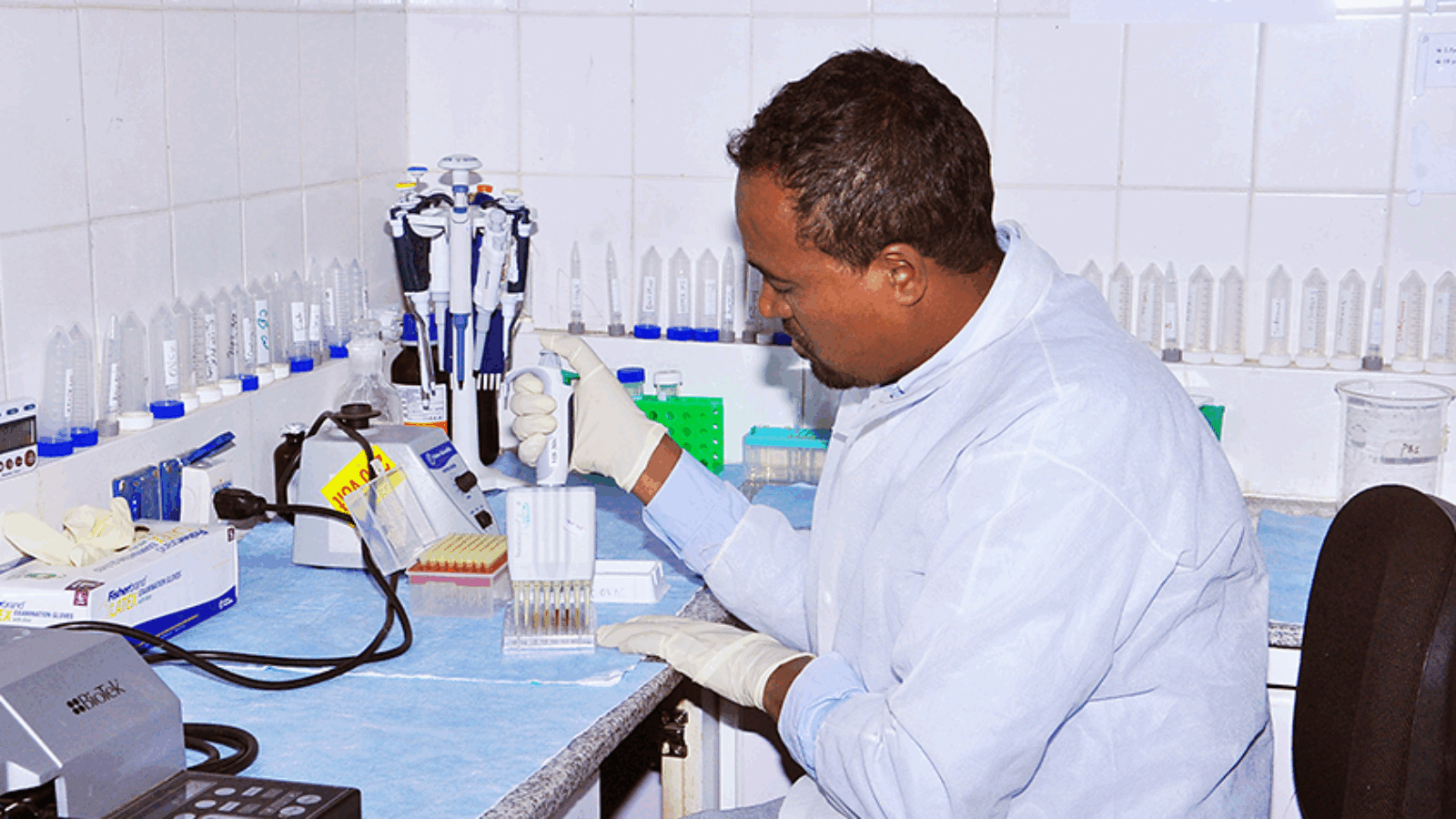Laboratory Magnifies Ethiopia’s River Blindness Work
Ethiopia is serious about eliminating river blindness and has the laboratory to prove it.
The laboratory, in Addis Ababa, opened in October 2015 as the Ethiopia Ministry of Health shifted from merely seeking to control the disease, technically called onchocerciasis, to trying to eliminate it entirely.
The Carter Center provided most of the initial supplies and materials, and the scientists’ and technicians’ salaries and other expenses are being funded by the Ministry of Health of Ethiopia.
“It’s one of the nicer labs outside of West Africa,” said Dr. Tom Unnasch, a University of South Florida microbiologist who has collaborated with The Carter Center on river blindness for more than 10 years. “It’s right on the campus of the Ministry of Health — kind of the equivalent of the U.S. Centers for Disease Control. It’s in its own building, and it’s been set up very nicely.”
The lab is a major step forward for the river blindness program, said Biruck Kebede, leader of the ministry’s Neglected Tropical Disease team.
“Literally, it’s a matter of having a program or not having a program,” he said. “It’s a matter of having about 20 million Ethiopians suffer from onchocerciasis or helping them get rid of this challenge and not have to think about onchocerciasis in their country.”
A laboratory capable of conducting state-of-the-art serological (i.e., blood) and entomological (insect) testing was essential to Ethiopia’s shift from merely trying to control the disease to trying to eliminate it, said Dr. Zerihun Tadesse, the Carter Center’s country director in Ethiopia.
That paradigm shift meant changing mass treatment with Mectizan® (donated by Merck & Co., Inc., Kenilworth, N.J., USA) from once per year to twice per year, multiplying the cost of the program, Tadesse explained. That greater investment necessitated more accurate targeting of treatment areas, which the new laboratory makes possible.
“It has made a lot of difference when it comes to determining endemicity of the disease,” he said. “And more importantly, it plays a key role in determining whether transmission in an area is interrupted or not, and in determining at a later stage whether the area is free of onchocerciasis.”
This work requires the collection of blood samples from many individuals and molecular analysis of the black flies that transmit the disease, “and the numbers are huge,” Kebede said.
“They have a very interesting saying: ‘Black fly doesn’t lie,’” Tadesse said. “You could have some issues with tests from human beings, but ‘black fly doesn’t lie.’ So, if you collect an adequate number of flies from endemic areas and run the test, then the result is pretty good to tell you whether transmission is ongoing or not.”
To carry out so much science, “you need to have a lot of hands,” Kebede noted. “It’s not just the availability of the machines, but also the availability of trained people. The people are trained and hired by The Carter Center, so the dedicated lab plays a huge role in achieving the elimination target.”
Reaching the target in a particular study zone would allow Ethiopia to halt mass drug administration in that area and begin three years of surveillance to see if the disease returned.
“Short of this laboratory, there is no way to tell whether we will be able to stop treatment in a given area,” Tadesse said. “There is no way to tell without being able to measure.”
Kebede concurred and took it a step further.
“If we did not have the laboratory, we would not hit our elimination target, we would not have the interventions in place, and we would not be deciding whether to stop treatment or not,” he said. “So it’s really a matter of getting rid of onchocerciasis and making these 20 million people not suffer any longer. That’s a very huge implication for the health system, and I believe all of these healthy communities are a testimony for the work the lab is going to contribute —not just for the program but for the nation as a whole.”
Global Impact Starts with You
Your support sustains the Carter Center's mission of waging peace, fighting disease, and building hope around the world.



